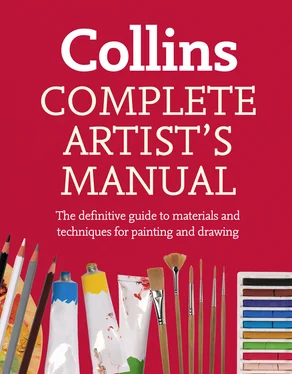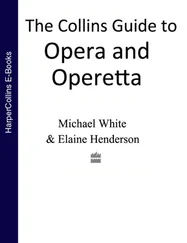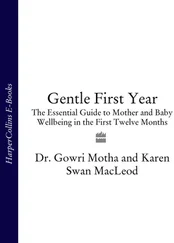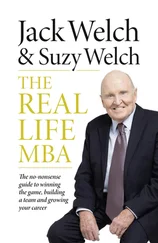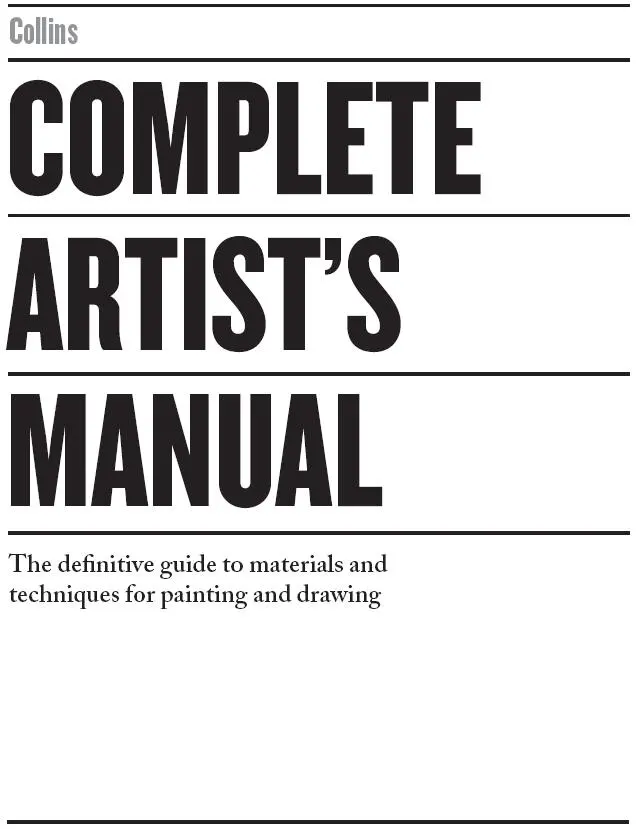
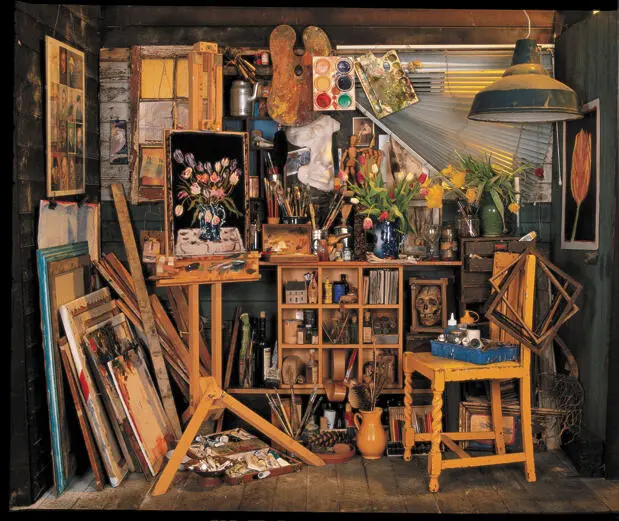
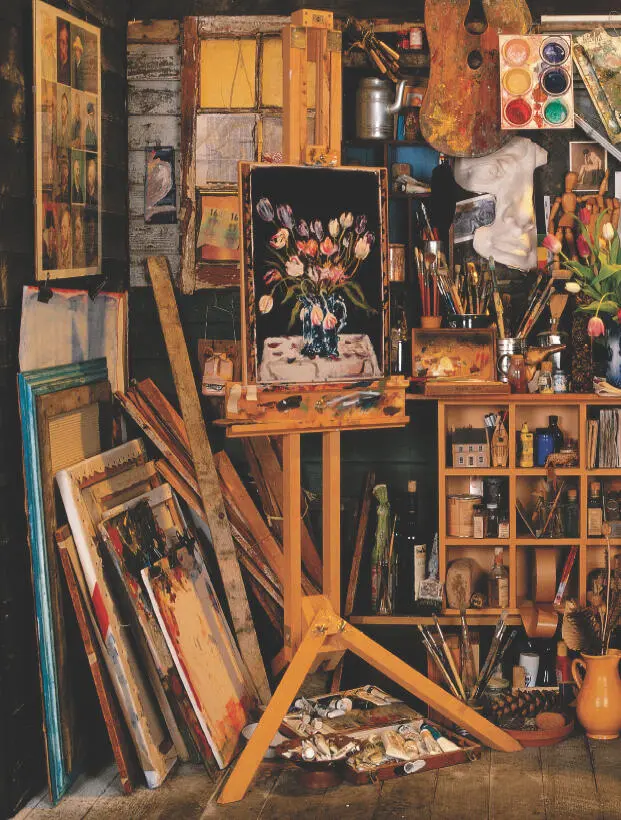
CONTENTS
Cover
Introduction INTRODUCTION Renoir once observed that ‘painting isn’t just daydreaming, it is primarily a manual skill, and one has to be a good workman’. Too often it is forgotten that painting is a craft as well as an art – and a difficult craft to master, at that. At first sight, dipping a brush into paint and applying it to a surface seems easy enough. But there are traps for the unskilled: an inadequately prepared support may warp or buckle; the wrong support can adversely affect the way the paint handles; ill-chosen colours turn muddy when mixed together; poor-quality or fugitive colours will fade in time. By understanding the materials and techniques at his or her disposal, the artist can avoid such pitfalls and increase the pleasures of making art. In recent decades, art schools have tended to dismiss basic skills and techniques as ‘irrelevant’, and they have been neglected in favour of ‘freedom of expression’. In so doing, tutors have thrown the baby out with the bathwater, for without a thorough technical grasp of materials and methods, students of art have no real freedom to express their ideas – it is like asking someone with no knowledge or concept of grammar or syntax to write a novel. This is not to imply that a good craftsperson is necessarily a good artist. Manual dexterity and technical know-how are meaningless if an artist’s work is deficient in thought and feeling. Along with a learning hand, one must develop a seeing eye – and for many people, this is the most difficult part. In the desire to produce a ‘finished’ picture, the impatient student often overlooks the two things that are fundamental to all art: drawing and observation. It is vital to train your eyes by really looking at the world around you, and to keep sketching and drawing all the time. When you draw what you see, you develop your powers of observation and analysis. Your mind absorbs many details – for instance, the way light and shadow create form, how tone and colour alter with distance – enabling you to draw a surprising amount from memory and from imagination. The purpose of this manual, then, is twofold. First, by providing an in-depth examination of the skills and techniques involved, not only in painting and drawing but also in preparing a support and in choosing and mixing colours, it endeavours to encourage a pride in the craftsmanship needed to produce a work of art. Second, by using a wide range of work by respected professional artists as a source of inspiration, it aims to help you develop your personal vision of the world and to find your own voice in interpreting that vision.
Acknowledgements
1/ SUPPORTS
2/ DRAWING MEDIA
3/ PAINTING MEDIA
4/ WHERE SHALL I START?
5/ DRAWING & SKETCHING
6/ PAINTING TECHNIQUES
7/ COLOUR & COMPOSITION
8/ WHAT SHALL I PAINT?
9/ THE STUDIO
10/ GALLERY OF ART
Reference& List of Searchable Terms
Copyright
About the Publisher
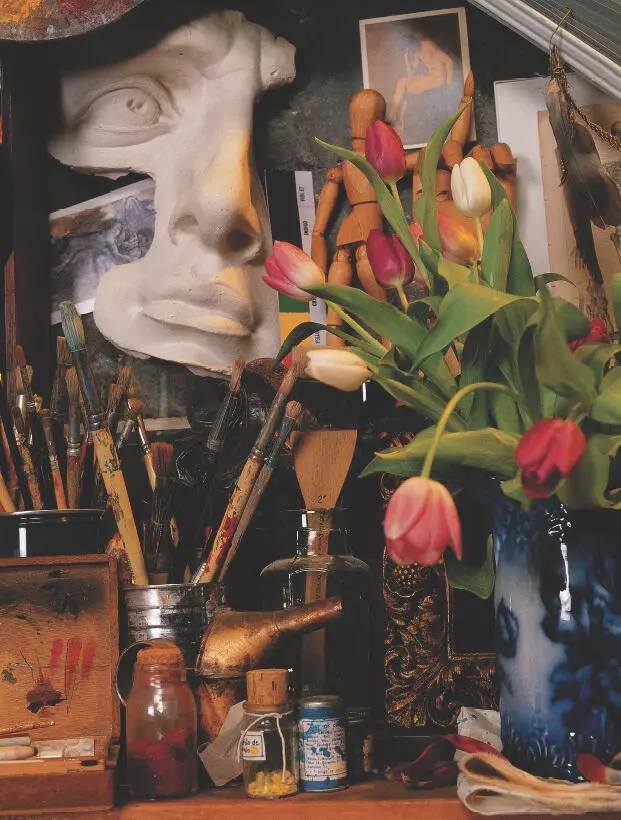
INTRODUCTION
Renoir once observed that ‘painting isn’t just daydreaming, it is primarily a manual skill, and one has to be a good workman’. Too often it is forgotten that painting is a craft as well as an art – and a difficult craft to master, at that.
At first sight, dipping a brush into paint and applying it to a surface seems easy enough. But there are traps for the unskilled: an inadequately prepared support may warp or buckle; the wrong support can adversely affect the way the paint handles; ill-chosen colours turn muddy when mixed together; poor-quality or fugitive colours will fade in time. By understanding the materials and techniques at his or her disposal, the artist can avoid such pitfalls and increase the pleasures of making art.
In recent decades, art schools have tended to dismiss basic skills and techniques as ‘irrelevant’, and they have been neglected in favour of ‘freedom of expression’. In so doing, tutors have thrown the baby out with the bathwater, for without a thorough technical grasp of materials and methods, students of art have no real freedom to express their ideas – it is like asking someone with no knowledge or concept of grammar or syntax to write a novel.
This is not to imply that a good craftsperson is necessarily a good artist. Manual dexterity and technical know-how are meaningless if an artist’s work is deficient in thought and feeling. Along with a learning hand, one must develop a seeing eye – and for many people, this is the most difficult part. In the desire to produce a ‘finished’ picture, the impatient student often overlooks the two things that are fundamental to all art: drawing and observation. It is vital to train your eyes by really looking at the world around you, and to keep sketching and drawing all the time. When you draw what you see, you develop your powers of observation and analysis. Your mind absorbs many details – for instance, the way light and shadow create form, how tone and colour alter with distance – enabling you to draw a surprising amount from memory and from imagination.
The purpose of this manual, then, is twofold. First, by providing an in-depth examination of the skills and techniques involved, not only in painting and drawing but also in preparing a support and in choosing and mixing colours, it endeavours to encourage a pride in the craftsmanship needed to produce a work of art. Second, by using a wide range of work by respected professional artists as a source of inspiration, it aims to help you develop your personal vision of the world and to find your own voice in interpreting that vision.
| ACKNOWLEDGEMENTS |
| This book is the work of many hands, and is the result of several years’ planning and preparation. The designers, editors and producers are indebted to all who have contributed and have given freely of their time and expertise. Our thanks go to the following: |
Editorial Consultants
Dr Sally Bulgin
Editor and owner of The Artist and Leisure Painter magazines. Author of several art instruction books
Angie Gair
Author of several art instruction books
Art and Technical Consultants
Trevor Chamberlain,
ROI, RSMA
Carolynn Cooke
David Curtis, ROI,
RSMA
John Denahy, NEAC
John Lloyd
Terry McKivragan
John Martin
Ian Rowlands
Brian Yale
With special thanks to:
Ken Howard, RA, ROI,
RWS, NEAC
Daler-Rowney Ltd
Emma Pearce
Winsor & Newton
Demo Artists
Alastair Adams
Ray Balkwill
David Day
Jennie Dunn
David Griffin
Timothy Easton
Robin Harris
Nick Hyams
David Jackson
Ella Jennings
Simon Jennings
Ken Howard
John Lidzey
Debra Manifold
Alan Marshall
Kay Ohsten
Ken Paine
Peter Partington
Jackie Simmonds
Shirley Trevena
Читать дальше
